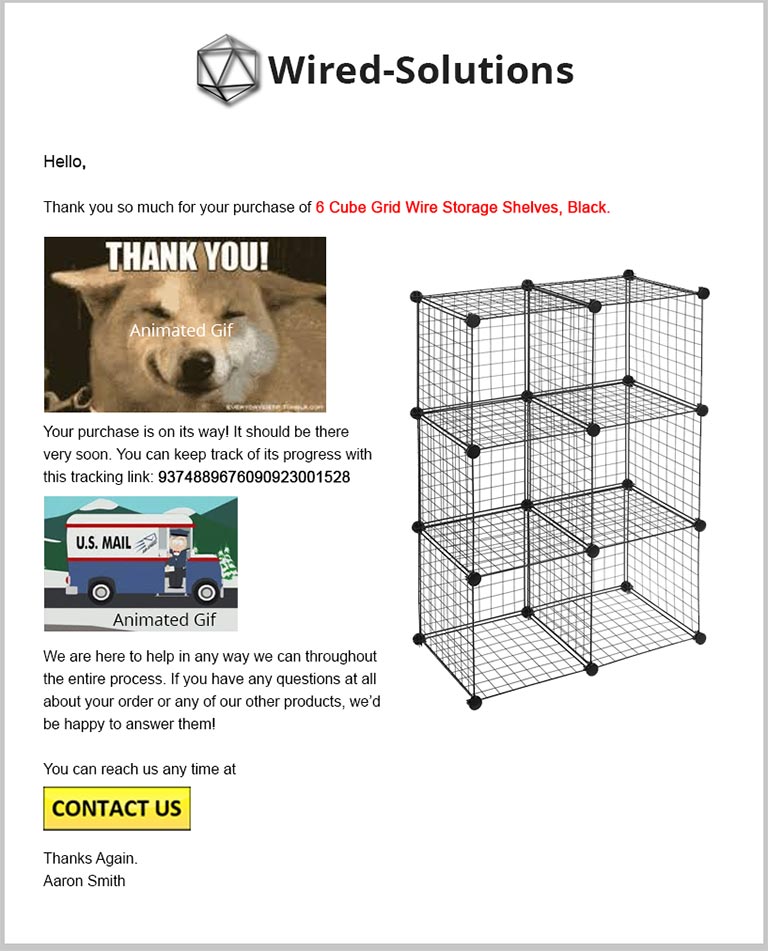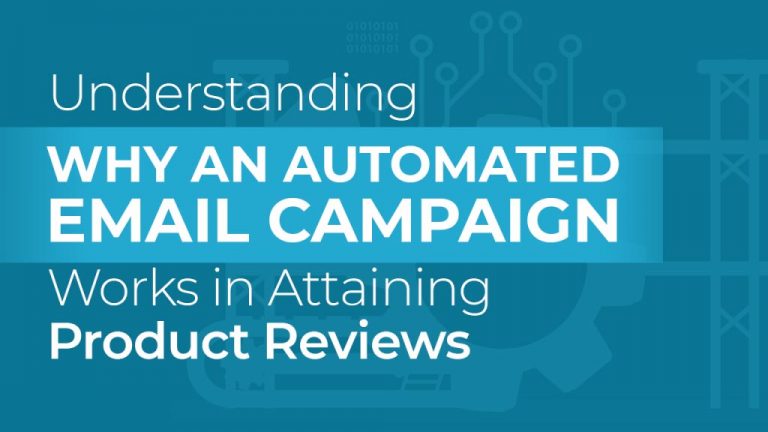Last updated on June 17th, 2020 at 09:02 am
When Amazon customers are shopping for new products, they take multiple factors into account when making their decisions. The listing and details on a product are important, as is the price. But arguably the most important factor of all, especially after the customer has narrowed his or her search down to a few options, is product reviews.
Imagine a scenario in which a customer narrows their search down to three similar private label products in the same category. How will they make up their mind? If one product has an average rating of 3.4 stars, another has only three product reviews, and a third averages over 4.0 and has hundreds of product reviews backing that rating up; the choice is going to be a pretty easy one.
With this in mind, Amazon sellers are always hoping to earn more product reviews on their items. Automated email campaigns are the best and most reliable way to do so.
Product reviews can be hard to come by
There unfortunately isn’t a magical way to gain more product reviews. Methods like offering compensation in the form of discounts, coupons, or free products in exchange for positive reviews are all in violation of Amazon’s terms of service. Falsifying product reviews with these methods or others (including fake reviews or agreeing to trade positive reviews with other Amazon sellers) can result in penalties including review removals and account suspensions.
Studies vary on how many buyers on Amazon leave product reviews and seller feedback, but most estimates land in the range of 5-15%. This number will also be higher or lower based on factors such as the demographic of the target audience. But regardless of what you sell, the number is quite low; say an average of roughly one in 10 product reviews for every 100 sales you make.
A good portion of the majority of customers who do not leave product reviews simply don’t think to. Even if a customer loves a product, they may be more inclined to tell friends about it than they are to write a product review. Customers expect a product to work as advertised, so when it does, they don’t think to write a review about it.
Email Campaigns are a numbers game
This is where an email campaign comes in. By giving customers a friendly reminder about how important product reviews are and how valuable their feedback is, they may be inspired to leave a review when they wouldn’t have considered doing so otherwise.
Even an email campaign that doesn’t have an extremely high conversion rate can still have a huge impact. Say that you send out an email asking for a review on 100 sales that you have made. If only 20% of the people who receive the email read it, and only 25% of those 20 who read it leave a product review, this still translates to five product reviews in 100 sales; a 50% increase over a projected average of 10 reviews out of 100 sales.
Through trial and error, you can build up your conversion rates. In addition to automatically sending out emails after every sale so that you don’t have to, FeedbackWhiz also has other features like A/B testing to let you test different email titles and find which ones work out the best for you and your business. You can also add animated GIFs or images with links built into them to spruce up your emails and to make them more engaging.
After some adjustments to your title and the content of your emails, even just a small increase on the above example to roughly 30% of your emails opened and 30% of those opened emails converting into product reviews would result in about 10 new product reviews. That’s a 100% increase over average! And thanks to automation, these email campaigns can be set and then left to work on their own, steadily bringing in more product reviews without you needing to use up your day.

Breaking the ice with something helpful in your first email
To help with conversion rates, we suggest sending a first email without any calls to action to build a relationship with your buyer. Depending on your brand, this email can be funny, informative, or maybe even a bit of both.
The idea is to provide something of value, even if it is just your availability, without asking for anything in return. This can build a trust between you and your customer so that when they open the next email that asks for a product review, they are more likely to be receptive to it. Here is an example template for what a first email, scheduled to be sent out when the order has been shipped, might look like:
Hello,
Thank you so much for your purchase of [PRODUCT NAME]!
(Fun thank you GIF)
Your purchase is on its way! It should be there very soon. You can keep track of its progress with this tracking link: [SHIPPING TRACKING LINK]
(GIF of a mail truck)
We are here to help in any way we can throughout the entire process. If you have any questions at all about your order or any of our other products, we’d be happy to answer them! You can reach us any time at [SELLER CONTACT LINK].
Thanks again,
(Seller Name)
Automated email templates can be built with smart tags that populate unique information based on the buyer’s information. For example, a [PRODUCT NAME] smart tag will automatically populate the exact product that this customer bought.
Expressing the importance of product reviews in your second email
Once your customer has had the chance to use their product, you will want to send them an email asking for a product review. Keep in mind that the time you should schedule this email will depend on the product you are asking for a review on.
If your customer purchased a pen, you could schedule an email to go out about a week after they receive it, as they will have likely already had a chance to formulate an opinion on it based on how it writes and feels in their hand after just one or two uses. For something like a briefcase, it might be worth waiting a few weeks so that the buyer has a chance to use it on multiple work days and get a sense of how durable it is.
It is against Amazon’s Terms of Service to explicitly ask for a positive review. Instead, you can only ask for an honest review. Keep this in mind when structuring your call to action. Here is an example of what the second email could look like:

Hello,
It’s (Seller Name) again! Just wanted to check in and see how things are going with your [PRODUCT NAME]. We hope you have been enjoying it!
If you have a moment, we’d sincerely appreciate it if you could give our product a quick review. Customer feedback is extremely valuable to us as it helps us to understand what our customers are looking for. It is also very helpful to the Amazon community as many buyers factor product reviews heavily in their decision-making process! Your thoughts would be greatly appreciated: [PRODUCT REVIEW LINK]
(Thank you for your time GIF)
And as always, don’t hesitate to contact us if you have any questions or concerns about your order. We are always here to help! [SELLER CONTACT LINK]
Thanks,
(Seller Name)
Once you set up templates like these ones with an automated email service like FeedbackWhiz, your work is done. Every sale you make will be followed up with multiple emails, which will convert more of those sales into valuable product reviews. The cycle keeps building on itself as more reviews lead to more sales, more sales lead to more reviews, and so on!



